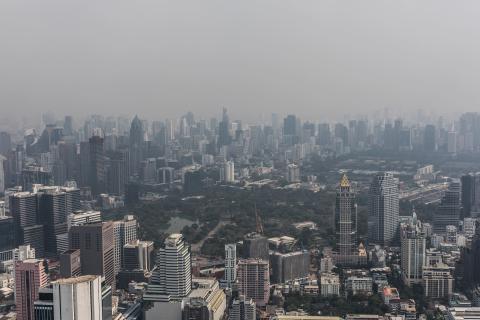Reaction to study proposing new mechanism to explain asthma attacks
An international team of researchers, with Spanish participation, has proposed in the journal Science a new mechanism to explain asthma attacks more fully. According to their hypothesis, the mechanical forces that occur during these episodes cause cells to accumulate in excess, leading to a process of elimination called "cell extrusion". As a result, the tissue is damaged, loses its barrier function and increases the risk of successive attacks. Inhibitors of this mechanism improved damage and inflammation in laboratory mice.

Asma - Soto (EN)
José Gregorio Soto Campos
Director of the Pneumology and Allergy Clinical Management Unit of the Hospital de Jerez
The airway epithelial layer provides a first line of defence against foreign antigens and is essential for maintaining tissue homeostasis. It is documented that, at the respiratory level, defects in epithelial barrier function are associated with chronic airway diseases such as asthma.
The study is quite interesting and of good quality. It talks about a new concept, the excess of cell extrusion due to the mechanical forces that are created. This study includes basic animal experiments where asthma is induced and shows that these mechanisms can be prevented by blocking the extrusion pathway with gadolinium or S1P inhibitors, reducing the subsequent inflammatory response. Gadolinium also blocks mucus secretion from the airways and this may be important in asthma patients in terms of improving symptoms and lung function.
It is now known that the defective barrier function of the airway epithelium in asthmatics has important consequences for the pathophysiology of the disease. It may, for example, increase the accessibility of allergens to the immune and structural cells of the submucosa, with all the usual consequences.
But there may also be alterations, both structural and secretory, leading to increased pro-inflammatory activity and secretion of growth factors. Structural and functional alterations of the airway epithelium are thought to induce aberrant signalling to underlying immune and structural cells, propagating structural remodelling, inflammation and bronchial hyperresponsiveness.
It has previously been proposed that this loss of epithelial integrity that compromises barrier function in asthma would not be secondary, but causative to the pathogenesis of the disease, having important implications for the development of asthma.
Studies in the recent past suggest the existence of the "exacerbation-prone" phenotype of asthma. We know that the occurrence of exacerbations in the recent past, requiring emergency services, is a reliable predictor of developing future exacerbations. This study may explain this increased susceptibility to new exacerbations in one group of patients.
The experimentation presented in the article defines the role of the extrusion pathway in controlling the subsequent symptoms of an asthma attack and may open a pathway for future research into possible therapeutic targets.
The animal model should be transferred to asthmatic patients and show that extrusion pathway inhibitors are equally effective.
Future biomarkers remain to be defined, but it could be useful in patients with frequent exacerbations.
Bagley et al.
- Research article
- Peer reviewed
- Experimental study



